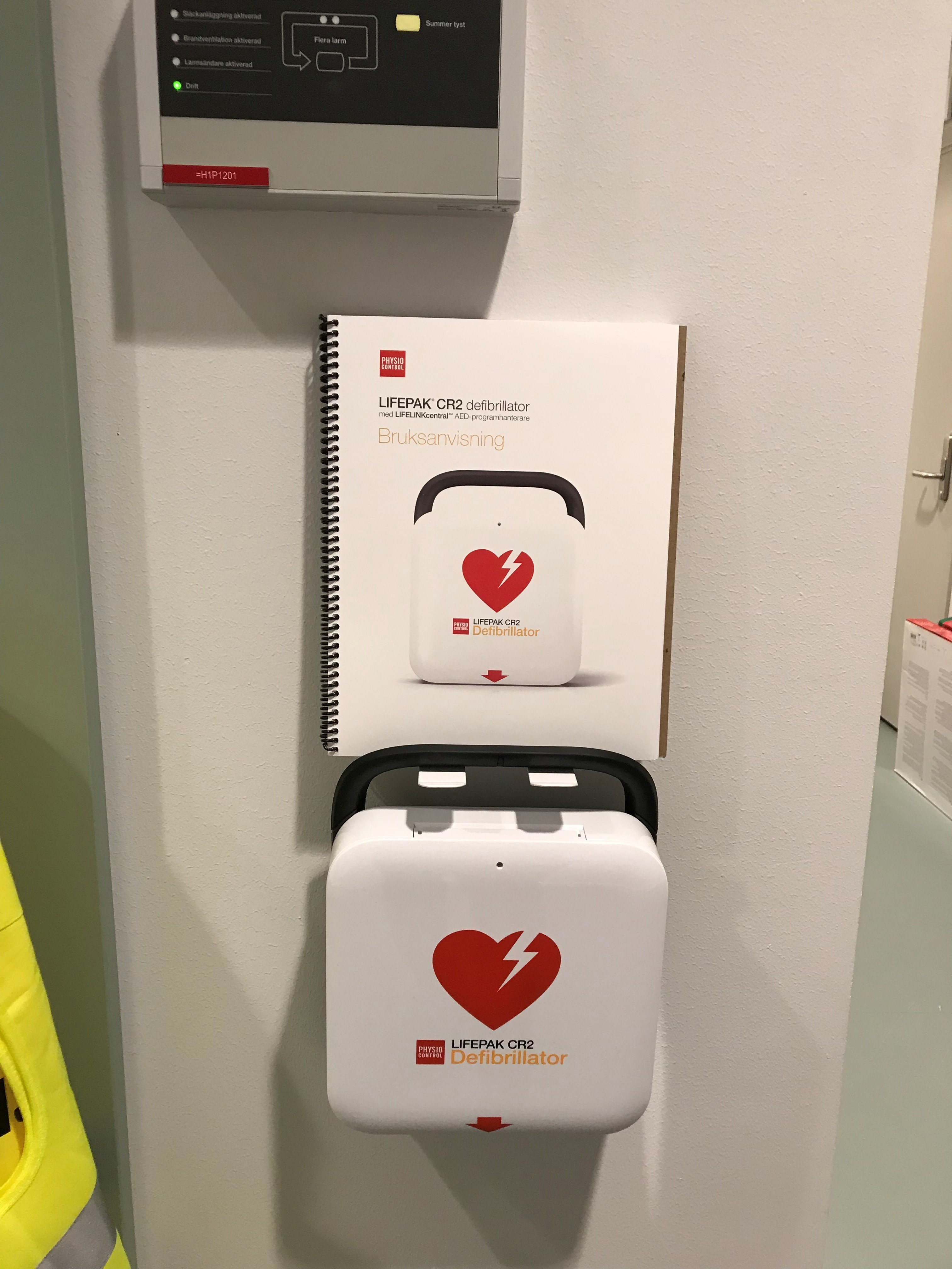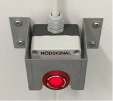Procedures in Case of Emergency in Biomedicum
Please notice that the following routines are applicable to Biomedicum. There may be other routines in other buildings.
In Case of Crisis and Disaster
- Dial SOS ALARM: 112
- Call Biomedicum guard: +46 (0)8-524 86 447
- Follow Karolinska Institutet's checklist for workplace accidents
Security Guard
There is a security guard in Biomedicum 24/7 who makes regular rounds of the building. In case of emergency always call the Biomedicum guard for help and assistance.
Biomedicum guard: +46 (0)8-524 86 447
KI campus guard: +46 (0)8-524 86 429

Defibrillators
Defibrillators are located on all floors from floor 4 to 10 in the stairwell of building A.
Defibrillators are also available at the goods reception on floor 2, by the FM office on floor 2, in the administration quarter A on floor 3, and in the main reception on floor 3.
Operating instructions and quick user guides are available by all defibrillator-stations. The instruction is also available below 'Quick user guide responding to a cardiac arrest emergency'.
In case of spills or emissions of hazardous chemicals
Chemical Spill Clean-up Help
In case of need for cleaning assistance, first contact Ocab i Stockholm AB at the emergency number 020-62 00 40 (available 24/7) or email skadejobb.sthlm@ocab.se.
If Ocab is unable to take on the work, contact Spolsnabben AB at 0771-55 08 10 (available 24/7) or email info@spolsnabben.se.

- Close off the area and put up the “Hazardous Area”-sign found in the chemical spill kit by the nearest emergency station
- Alert your colleagues about the spill
- If needed, activate the chemical spill evacuation alarm (blue push buttons by the main entrances to each block, see picture). Push for 3 seconds to activate/deactivate the chemical spill alarm. Please note that the alarm is local and therefore does not automatically alert emergency services or security guards. In case of emergency, always call SOS ALARM: 112
- Follow the KI Instructions for emergencies such as major spills and emissions of hazardous chemicals
- Once the block/quarter has been evacuated, only authorized personnel may enter the premises until decontamination has been completed
In Case of Accidental Release or Spill of Hazardous Chemicals into Sink:
- Follow the KI Instructions for emergencies such as major spills and emissions of hazardous chemicals
- Contact the following instances immediately and inform about the spill:
- FM Helpdesk
- Stockholm Vatten och avfall: +46 (0)8 522 120 00 (office hours), +46(0)8 454 25 70 (outside office hours)
- KI Environmental unit: +46 (0)8-524 801 00
- Käppalaverket (Solna): +46 (0)8-766 67 00 (office hours), +46 (0)8 766 67 36 (outside office hours)
- Solna municipality: +46 (0)8-734 20 00 (office hours)
More information is available at the KI staff pages for chemical safety.

Biomedicum Alarms
Oxygen alarm
Oxygen alarms are installed in rooms where for example liquid nitrogen or large volumes of CO2-gas is being handled. The alarm is activated if the oxygen level in the room drops too low. The alarm is local and is indicated by sound and a blue flashing light outside of the room. It is important that the person who sees and hears this alarm checks so that no person is in danger. When the oxygen level is back to normal, the alarm switches off automatically.

Pressure Deviation Alarm
Cell culture labs and isotope labs are equipped with a pressure deviation alarm. The pressure deviation alarm is local and is indicated by a red and green light in the fore-room. In the event of red light, the door to the room should be closed. When the pressure deviation is back to normal this is indicated by a green light.

Freezer room alarms
The freezer rooms at Biomedicum are equipped with security alarms with red push buttons. The alarm is indicated by a siren and a red flashing light outside the room. The alarm is automatically forwarded to the Biomedicum security guards. Alarms are reset inside each room by pressing the green reset button.
Incident Reporting
Any kind of event affecting your physical and psychosocial work environment needs to be reported in KI's electronic incident reporting system. More information on how to report and incident is available on the Staff portal.
You can also report an incident by submitting an anonymous report.
